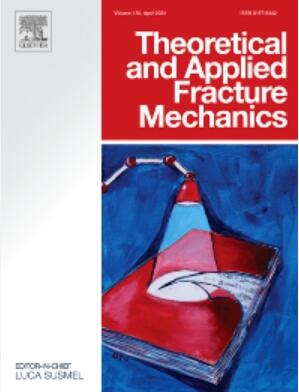Study on fatigue life of mining tires based on fatigue crack propagation theory
IF 5
2区 工程技术
Q1 ENGINEERING, MECHANICAL
引用次数: 0
Abstract
Owing to the harsh working environment in which mining trucks operate, tires tend to fail prematurely. In this study, using 53/80R63 tires as the research object, two- and three-dimensional finite element models (FEM) of tires were established. A steady-state rolling simulation analysis was carried out. A crack growth test was performed on the rubber material, and the test data were fitted using the least squares method to obtain the fatigue parameters required in this study. According to the simulation results of steady-state rolling, fatigue life prediction under different working conditions was performed using fe-safe™ software, and the effects of different load rates, inflation pressures, and vehicle speeds on tire fatigue life were analyzed. The results show that when the inflation pressure and vehicle speed were constant, with an increase in load, the life of the belt layer and the sidewall part gradually decreased, and the life of the chewing rubber part displayed a sharp decreasing trend. Under the condition of constant load and vehicle speed, with an increase of inflation pressure, the life of the belt layer gradually decreased, and the life of the sidewall part decreased significantly. Under constant load and inflation pressure, vehicle speed had little effect on the tire fatigue life.
基于疲劳裂纹扩展理论的矿用轮胎疲劳寿命研究
本文章由计算机程序翻译,如有差异,请以英文原文为准。
求助全文
约1分钟内获得全文
求助全文
来源期刊

Theoretical and Applied Fracture Mechanics
工程技术-工程:机械
CiteScore
8.40
自引率
18.90%
发文量
435
审稿时长
37 days
期刊介绍:
Theoretical and Applied Fracture Mechanics'' aims & scopes have been re-designed to cover both the theoretical, applied, and numerical aspects associated with those cracking related phenomena taking place, at a micro-, meso-, and macroscopic level, in materials/components/structures of any kind.
The journal aims to cover the cracking/mechanical behaviour of materials/components/structures in those situations involving both time-independent and time-dependent system of external forces/moments (such as, for instance, quasi-static, impulsive, impact, blasting, creep, contact, and fatigue loading). Since, under the above circumstances, the mechanical behaviour of cracked materials/components/structures is also affected by the environmental conditions, the journal would consider also those theoretical/experimental research works investigating the effect of external variables such as, for instance, the effect of corrosive environments as well as of high/low-temperature.
 求助内容:
求助内容: 应助结果提醒方式:
应助结果提醒方式:


